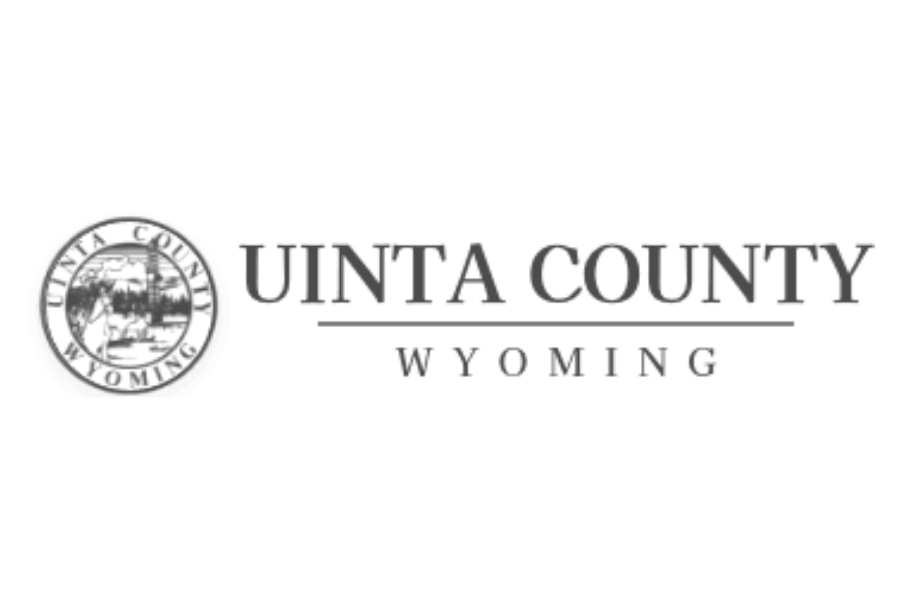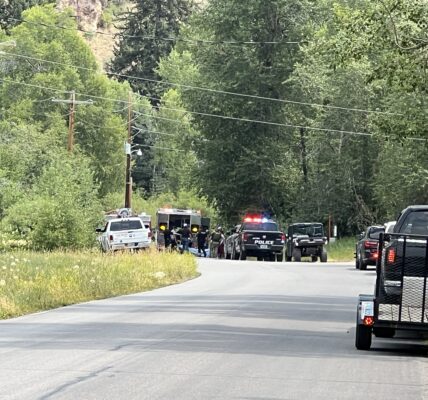Uinta County Citizens Coalition: Natural Asset Companies new threat to property rights

By Virginia Giorgis
Bridger Valley Pioneer
Via- Wyoming News Exchange
LYMAN — Conservation easements in the past were looked at as a way to protect land from development by giving a local land trust or government agency the right to oversee and protect the land.
The easement still allows the land to be privately or federally owned and used.
However, with newer developments and the push by the Biden Administration’s 30×30, the concept has created concerns on the local level, Carl Larson, spokesman for the Uinta County Citizens Coalition said Tuesday.
The UCCC met with the Uinta County Commissioners on Dec. 19 about the New York Stock Exchange’s listing of Natural Asset Companies.
As of Wednesday, the Securities Exchange Commission had extended the public comment period for the NACs to Jan. 18, as there was criticism nationwide about the short comment period.
Larson said this new investment procedure would provide the owner of the easements with certain rights to private and public lands.
When meeting with the Uinta County Commission, Larson said the commission approved a letter to Erik Gerding, chair of the U.S. Security and Exchange Commission, asking the proposal to allow the NACs be canceled.
The commission stated in the letter dated Dec. 19, “NACs are a direct threat to oil and gas production, mineral development and the farming and ranching communities,” and would adversely affect property rights.
In addition, the commission cited its previous work on the county’s Comprehensive Plan and Public Lands policy.
The policy states, “The people of Uinta County, Wyoming believe the United States Constitution and the Wyoming State Constitution to be the supreme law of Uinta County. Those Documents contain the ultimate protections for the rights of Uinta County citizens in regard to the custom, culture, economic viability, social stability and quality of life and they guarantee our freedoms to pursue activities protected by those rights.”
According to Larson, the coalition is “concerned about a new threat to property rights, both private and federal, if the proposed NACs are approved.”
Larson also said these types of conservation easements have already been approved in Wyoming.
He said a big question is how are the rights acquired by the NYSE’s Natural Asset Companies and how are private and federal property rights protected on this issue.
This action, according to Larson, also plays into the hands of the 30×30 proposal by the Biden Administration in early May 2020. The 30×30 plan by the President’s executive order is to commit to conserving at least 30% of land and water by the year 2030.
In addition, U.S. Rep. Harriet Hageman, with 32 other U.S. House Representatives, sent a letter dated Dec. 15 to Gerding questioning the proposed NACs listings and saying the proposal would drastically alter land ownership and priorities.
“The proposal is complex and based on a novel, non-traditional investing mechanism that would seemingly allow for the buying and selling of certain undefined ‘rights’ to certain private and public lands, including to foreign nations and noncitizens, to terminate and prevent all economic activity on such properties,” the letter stated.
It also addressed that the NACs were created by the “Intrinsic Exchange Group in collaboration with the NYSE and will hold rights to ‘natural assets’ as well as assume the responsibility of managing those assets.”
The letter focused on the complexity of the proposal and questioned the SEC’s oversight to protect management authority of federal lands.
Hageman’s letter also stated the proposal “has the possibility to fundamentally change U.S. land access, management, use, and ownership as we know it, including by auction our most prized resources off to the highest foreign bidder, including to hostile regimes that clearly do not have our best interests at heart. A 21-day comment period is simply unacceptable…” and requested the SEC reopen the comment period for an extended time.
Technically, easements are sold to “conserve open spaces and working landscapes by limiting residential and commercial development or subdivision of land.
“Easements can also protect important wildlife habitat. Landowners can benefit financially from easements through a reduced tax burden when the landowner donates the easement or through direct payment for the loss of development rights.”
The concern, according to Larson, is that the ground can be locked up by the easement and then sold to another party or entity which does not even have to be in the United States.
Two major easements in Wyoming have already been finalized by two of Wyoming’s legislators.
Ogden Driskill, who is a Farm Bureau and Wyoming Stock Growers Association member, was also a founding board member of the Wyoming Stock Growers Land Trust and has partnered with the land trust to place two conservation easements on his personal and family owned property at the base of Devils Tower, the nation’s first National Monument.
Driskill was named the recipient of the 2020 Kurt Bucholz Conservation Award after his conservation easement. His easement was slated as protection of the area around Devils Tower.
Another easement belongs to Wyoming rancher and Sublette County Legislator Albert Sommers, who was the recipient of the 2022 National Private Lands Fish and Wildlife Stewardship Award, who has said he had no kids to leave his ranch to and didn’t want to see his ground broken up for development.
The Sommers Ranch includes hay and livestock production in the late-fall, winter and early spring. The cattle operation is a commercial herd of 300+ Angus/Hereford cross cows. Sommers also grazes cattle in the 56,000-acre Bureau of Land Management Mesa allotment and the 132,000-acre U.S. Forest Service Upper Green River allotment.
American Farm Bureau Federation President Zippy Duvall said recently that the AFBF was very aggressive in talking to the administration about the possible implications of the 30×30 plan.
“We’ll keep watching like a hawk to ensure their ideas translate to responsible policy,” he said.
To reach the 30% target, it would require adding an additional area twice the size of Texas, or more than 440-million acres.
Farmers and ranchers have already enrolled 140-million acres in conservation programs, Duvall said, adding that’s the size of New York and California combined. The 30×30 policy, if enacted, would vastly impact the western half of the United States, as that is where the majority of open federal land is located.





